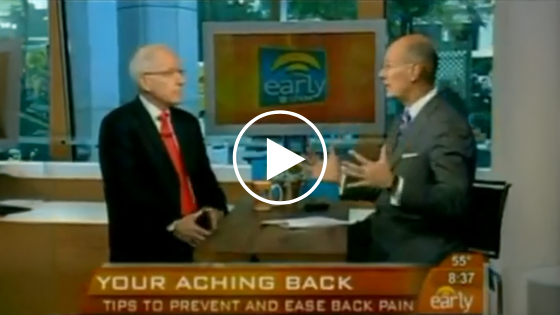Harry Smith discusses with Dr. Marcus simple things you can do to prevent or decrease back and neck pain.
If you develop back pain, it is important to make sure that there is not a serious underlying condition. Signs and symptoms that would indicate that you should see your doctor quickly include redness, heat, or swelling in the area of the pain, fever, chills, weight loss, pain going down your leg accompanied by loss of sensation in the leg, weakness, and problems controlling your sphincters.
70 to 80% of back pain is from sprains and strains of soft tissue such as muscles, ligaments, and tendons, and is called non-specific low back pain. Most patients will report that their pain gets better within the first few months.
Some patients may have elected to undergo spine surgery. Unfortunately 40 to 50% are ineffective and do not relieve the pain. The patient is then given a new diagnosis called “failed back surgery syndrome”.
Some suggestions to avoid back pain include sleeping on a reasonably firm mattress and avoiding sitting or standing in one spot for long periods of time.
Reading and watching TV in bed may increase or cause headaches, and pain in the neck, shoulders, and upper back. This is because holding the book to read or craning the neck to look at the TV both produce sustained contraction of the muscle without actually changing the length of the muscle (isometric contraction). If you want to do these activities in bed sit up with your back against the headboard to view TV; put the book on an easel on a bed tray to read, using your hands only to turn the pages not to support the book.
Men who put their wallet in their back pocket may cause pressure on a muscle in their buttock which results in squeezing of the sciatic nerve, causing pain and loss of sensation down the leg. This can mistakenly be thought to be coming from a herniated disc. Women’s shoes- avoid wearing flats-it may stretch the calf muscles and increase lower body discomfort; a low wedge heel is best.

